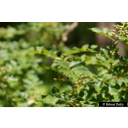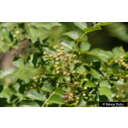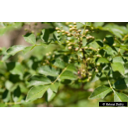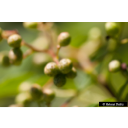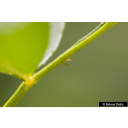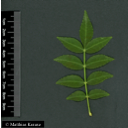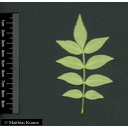Wissenswertes zu diesem Pflanzenindivuduum
Zanthoxylum bungeanum Maxim. 1871
Rutaceae
- Rautengewächse (APG IV)Täuschende Stachelesche
Akzessionnummer: SP-HS-014-15756
Pflanzjahr: 2022
Taxonkonzept: The Plant List (2014), version 1.1
Verbreitung: Nord-China, Zentralchina
Größe: 0 (m)Blütezeit: V - VI
Zanthoxylum coreanum Nakai - Accepted: Zanthoxylum coreanum Nakai bei Zander 2008; Familie: Rutaceae (Zander 2008)Zanthoxylum simulans Hance - Accepted: Zanthoxylum simulans Hance bei Zander 2008; Familie: Rutaceae (Zander 2008)Zanthoxylum simulans Hance - Accepted: Zanthoxylum simulans Hance bei The Plant List (2010); Familie: Rutaceae (APG III)Zanthoxylum simulans Hance - Accepted: Zanthoxylum bungeanum Maxim. bei The Plant List (2014), version 1.1; Familie: Rutaceae (APG III)Zanthoxylum bungeanum Maxim. - Accepted: Zanthoxylum bungeanum Maxim. bei The Plant List (2014), version 1.1; Familie: Rutaceae (APG III)Zanthoxylum coreanum Nakai - Unresolved: Zanthoxylum coreanum Nakai bei The Plant List (2014), version 1.1; Familie: Rutaceae (APG III)Zanthoxylum coreanum Nakai - Synonym: Zanthoxylum simulans Hance bei Plants of the World Online; Familie: Rutaceae (APG III)Zanthoxylum coreanum Nakai - Unresolved: Zanthoxylum coreanum Nakai bei The Plant List (2014), version 1.1; Familie: Rutaceae (APG IV)Zanthoxylum simulans Hance - Accepted: Zanthoxylum simulans Hance bei The Plant List (2010); Familie: Rutaceae (APG IV)
Bundesamt für Naturschutz (BfN) (1999-2001 and ongoing): Floraweb - Daten und Informationen zu Wildpflanzen und zur Vegetation Deutschlands. www.floraweb.de.; Oberdorfer, E. (2001): Pflanzensoziologische Exkursionsflora. Für Deutschland und angrenzende Gebiete. Eugen Ulmer Verlag, Stuttgart, 8., stark überarb. u. erg. Aufl, 1056 S. 978-3-8001-3131-0.; The International Plant Names Index (2009). Published on the Internet http://www.ipni.org; Courtesy to IPNI, 2009. Exported from IPNI at date: 2009-09-22 20:17:51;
Diese Webseite verwendet Google Maps, um Karten und Standorte von Pflanzen in den Hohenheimer Gärten anzuzeigen. Dadurch werden unter Umständen Daten an Google weitergeleitet, was mit einer Verarbeitung Ihrer personenbezogenen Daten verbunden sein kann. Die Datenschutzerklärung von Google finden Sie hier: Datenschutzerklärung von Google

